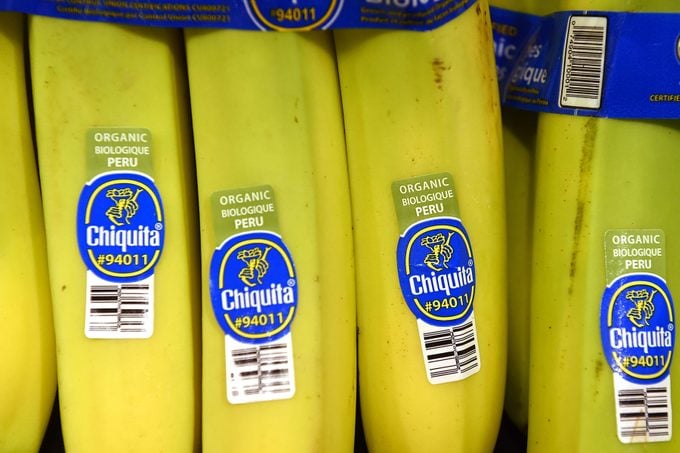The numbers on fruit stickers have a secret meaning for shoppers.

This Is How to Decode the Numbers on Fruit Stickers

You’ve no doubt removed countless stickers from fruits and vegetables over the decades. Have you ever stopped to wonder what the numbers mean? Perhaps you thought the numbers on fruit stickers were only a code for cashiers to use when they ring up your purchase, but the numbers have a purpose for the consumer, too.
Heads up—produce stickers should never go down the drain.
What is a PLU code?
The PLU code, or price look up code, is a unique number that appears on all of our fresh produce.
“It helps grocery stores quickly identify different types of fruits and vegetables at checkout so that they can capture the right price for each item,” says Brianna Shales, who serves on the Produce Identification Committee for the International Fresh Produce Association and as marketing director at Stemilt, a company known for its apples.
PLU codes also distinguish between organic and non-organic produce, and identify unique varieties of the same type of fruit. (For example, there’s a different PLU code for each type of apple.) The last thing numbers on fruit stickers tell you is the supplier or grower of the produce. “For instance, we put the Stemilt logo on our apple stickers so that consumers can look for our brand,” says Shales.
The stickers help everyone identify the product without having to package the item—which is important from an environmental standpoint. To speed through the self-checkout, memorize a handful of PLU codes, like 4011 for bananas.
Four-digit PLU codes
Every PLU code has at least four digits. “The actual number is used globally for that particular variety of fruit or vegetable, or for the size range within that variety,” says Shales. “A four-digit PLU represents conventionally grown (non-organic certified) fruit.”
Five-digit PLU codes

On the other hand, organic produce has a five-digit code, with a leading “9” in front of the 4-digit PLU. Look closely, and you’ll see that organic bananas are labeled 94011, while non-organic bananas are 4011.
A five-digit code with the prefix “8” was once intended for genetically modified produce items. “However, these were never used at retail, because there are very few GMO produce items,” says Shales. “The leading 8 now has no significance to growing type. It will likely be used once the 4-digit codes run out.” There are over 1,500 PLU codes assigned to fresh produce, according to the International Federation for Produce Standards.
Are the stickers on fruit edible?
The short answer is yes. The stickers have to be made with food-safe adhesive, paper and ink because they come in direct contact with raw fruits and vegetables. As such, fruit stickers are generally recognized as safe, or GRAS. They certainly won’t add much in the way of flavor to your apple, though.
















